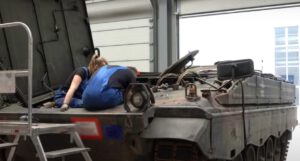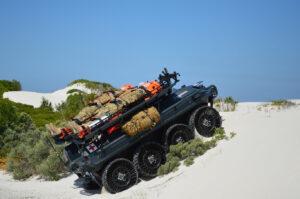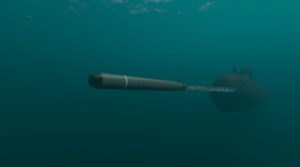
Robots can help us avoid the four D’s of work: dangerous, distant, dull and dirty. Letting robots help us with these types of tasks doesn’t just improve safety, they also improve efficiency, economy and the quality of work.
One of these robots is Taurob – named after it’s manufacturer.
But what’s so special about this Taurob robot?
It’s simply that it has the required classification to operate in what’s called an ATEX Zone 1: process areas where gasses are more likely to be present. This means that Taurob doesn’t create any sparks that can ignite potential gasses.
“The plan for Taurob is to have it on unmanned installations and function as our eyes, ears and hands. If an incident occurs, then we can use the robot to quickly get an overview of the situation.”
Anders Røyrøy
Anders has been working with robotics in Equinor for almost 15 years. He is currently part of the team working on the Taurob robot, based in Research & Technology.
“An important reason behind our work with robotics is to not expose personnel to any hazardous work,”
Anders says
Taurob comes complete with hardware and software from the manufacturer, but integration with our own systems is being done by software developers in Equinor.
Arnt Erik Stene is one of the software developers working on making sure the robot, nicknamed Taurob after its manufacturer, will be up to the task. He tells us that the biggest difference when developing code meant for a robot is that the code has an effect in the physical world.
“We have to make sure that our code doesn’t result in the robot doing something unexpected, which requires a lot of testing. There’s added focus on safety and security when we’re developing since we didn’t build the actual robot.”
Arnt Erik Stene
Autonomous robot produced by Taurob is scheduled to help with inspections and maintenance on unmanned, low-manned or normally unmanned offshore installations.
Cover image and Video Courtesy of Equinor



